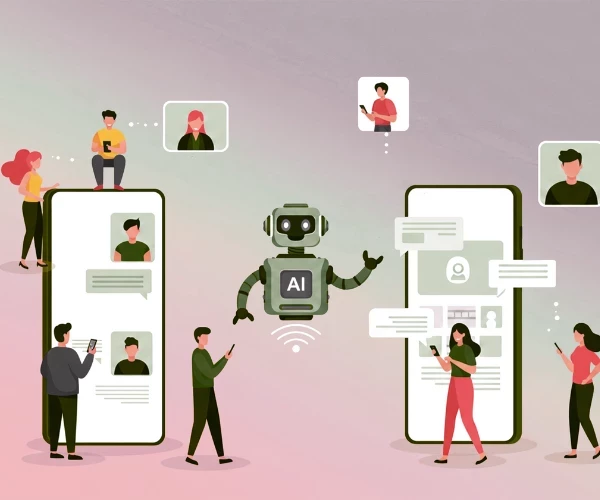Learning to Learn: Preparing People for Lifelong Performance & Results – Part II
Add bookmarkPart I of this article discussed the need to introduce more and better learning technologies into today's school system.
Part II focuses on why there is great need to shift the mission of schools from teaching to learning and the role of technology-assisted learning in producing and managing the learning process.
Part III discusses how Drucker’s highly disciplined observations about how people learn can be applied to manager self-development.
Editor’s Note
Let’s face it: Those over 50 years old were provided with a school system that gave them access to an experience that was infinitely wider, richer and more colorful than the confined static environment the family, small town, or even upper, lower and middle class neighborhood could ever hope to provide.
Yes, in many instances the teaching was poor, and in certain schools the discipline often harsh and unimaginative; yet, to enter school was an adventure. Without doubt, in many places, it still is.
But in America and other developed countries, children are introduced to the world through early access to computers, digital games, television and more. The way many subjects are now taught (or not taught at all) pale in comparison to the early electronic learning experiences of many small children.
Studies have shown many small children are either bored stiff by school or just stop learning because their early learning experiences make unendurable what can best be described as primitive, unimaginative classroom teaching.
From Teaching To Learning
The technology to produce and manage real learning already exists.
Said Drucker: “Technology makes it possible for the individual student to work individually, and at his or her own speed, rhythm and attention span…
… With technology-assisted learning, a student manages himself or herself very largely… Yes, you have to supervise them, {but at each step of the way the student has to experience achievement}...
... Motivation by continuous achievement is nothing new... All it requires is to focus on the strengths and talents of learners so they excel in whatever it is they do well...
...Any teacher of young artists–musicians, actors, painters–know this... So does any teacher of young athletes... But schools do not do it... They focus instead on learner's weaknesses..."
Teaching Vs. Learning
The teacher can make a great difference in one's learning. Nevertheless, the teacher is only a catalyst in the student's self-development.
Stated differently, Aristotle more than 2,500 years ago, believed genuine education is self-development. Only the learner can learn.
The trademark of most great teachers is the lecture method.
Most good teacher-lecturers are usually brilliant synthesizers who are capable of organizing a complex subject into a meaningful pattern; they are also able to engross their audience with dramatic and sparkling examples.
The great teacher can make a subject exciting and easy to understand. Without doubt, the lecture method is a valid technique in the hands of skilled practitioners.
Yet it is at best only a preparation for learning and not learning itself. (This is a point we will discuss in Part III with respect to manager self-development.)
To have true learning one must incorporate what is called "behavioral learning”into the learning process.
Practice is the basic key to all behavioral learning: it focuses on drill, rote, routine, repetition and constant feedback.
The reason individual student promise is so rarely converted into performance is the absence of practice.
Today's learning technologies can free teachers from spending most, if not all, their time on routine learning, remedial learning and repetitive learning.
By equivalently assigning to technology-assisted learning the behavioral learning component, teachers, we can hope, will increasingly have the required time to identify the strengths of individual students, focus on those strengths and lead students to achievement.
Stated differently, they will have time to do what teachers should do.
Making Required Capital Investments In Learning Technologies
In a nutshell, learning must become more capital-intensive. Yet this cost can be borne by all schools because the required technologies for teaching the basics are in general applicable to all schools.
As stated above, the technology exists to produce and manage real learning. Self-directed learning programs have proven to be far more effective.
In the school of tomorrow, students will be their own instructors–the computer program as their own tool. Much research reveals the younger the students are, the more computer-assisted learning appeals to them.
Why? Because it more successfully guides and instructs them.
Our point? Historically, K1-12 schooling has been totally labor-intensive. Tomorrow's K1-12 schooling will be heavily capital-intensive.
The Value of Professionally-Produced Learning Programs
A simple Drucker example explains this better than any long-winded discussion.
Take, for instance, the 30-second television commercial. Every split-second counts; every word means something.
“Few teachers spend in their entire teaching careers as much time with thought on preparing that classes as is invested in the many months of writing, drawing, acting, filming and editing one 30-second commercial…”
More than 50 years ago, Drucker observed that “electronic messaging conveys accessible information, clear images and perfect comprehension…
…It is just the right length for the attention span of the small child… It is perfect learning in its methodology, is indeed the prototype of the “ideal program” with its three key elements: effective sequence of the material, validation through repetition and self-motivation of the learner through pleasure.”
What a Quick Review of Technology-Assisted Learning Programs Revealed
We have reviewed some astonishing DVD/streaming programs in fundamentals of Mathematics, Algebra 1, Algebra 2 and others. Great teachers coupled with animations, simulation exercises and all the rest make difficult concepts exciting and easy to understand. Need we say more?
Indeed, we have also reviewed programs that have built-in tutors. For example, if the student has difficulty with, say, subtraction, he/she is led into a tutorial that teaches subtraction in a way very few teachers could replicate.
Reiterating Drucker's timeless wisdom stated above: "Technology makes it possible for the individual student to work individually, and at his or her own speed, rhythm and attention span. Technology can also extend a teacher’s span, the time teacher has to spend with individuals."
Asking the Right Questions About our Educational System
Drucker emphasized the need to ask the right questions. He believed that the most serious mistakes are not the result of wrong answers; the truly dangerous thing is asking the wrong questions–and getting the right answers.
Executives in business or administrators in a government agency, parents or their children, policy-makers or citizens, teachers or students must make every effort to address the right questions.
For decades, politicians among others, observed Drucker, have been asking the wrong questions about how to improve our educational system. At best, they've been getting the right answers to the wrong questions.
Once the right questions are formulated, the school of tomorrow will not just be a restored version of yesterday’s (or today’s) school. It will have different objectives and different priorities. It will prepare students for a world that requires continuous learning (i.e., skilling and re-skilling).
We have to facilitate "learning smarter" as opposed to better teaching. Today, many of these tools are now available. Learning technologies, in the last few years, have made remarkable gains. However, the majority of these tools have not yet made their way into the classroom.
To Reiterate
Billions of dollars have been spent in an attempt to get better teachers. But it won’t happen. It’s money down the drain if the cost to results ratio is examined.
Our politicians and educators must begin to ask the right questions about education. If they don’t, America’s economic prosperity, standard of living, income equality and world standing will greatly diminish.
The next five years will make unprecedented demands on political courage, political imagination, political innovation and political leadership. After all is said and done, we need government competence.
Summarizing: Income Equality and Education
For America to remain competitive, its students need to learn vastly more, much more quickly. The Gates Foundation, among others, have demonstrated a link between a country’s GDP and the academic test scores of its children.
Stanford economist Eric Hanushek’s statistical analyses (as reported in the Harvard Business Review) have found “that if a country's scores were only a half a standard deviation higher than another’s in 1960, its GDP grew a full percentage point faster in every subsequent year through 2000.”
Translated, long-term growth in the United States is dependent upon dramatically increasing the quality of our educational system.
Discussions relating to income equality rarely mention equality of effort. It seems effort is not only related to the individual student but to the entire system.
If we wait until these challenges have indeed become insurmountable, perhaps we will never recover. No leadership position is ever more than a temporary advantage.
Nations (as well as any other kind of institution) tend to drift from leadership to mediocrity. And the mediocre is three quarters down the road to becoming marginal or second-rate.
Part III of this article will explain and illustrate how Drucker’s one-of-a-kind observations and principles can be applied to the all-important task of manager self-development and, hopefully, continuous organizational renewal.































